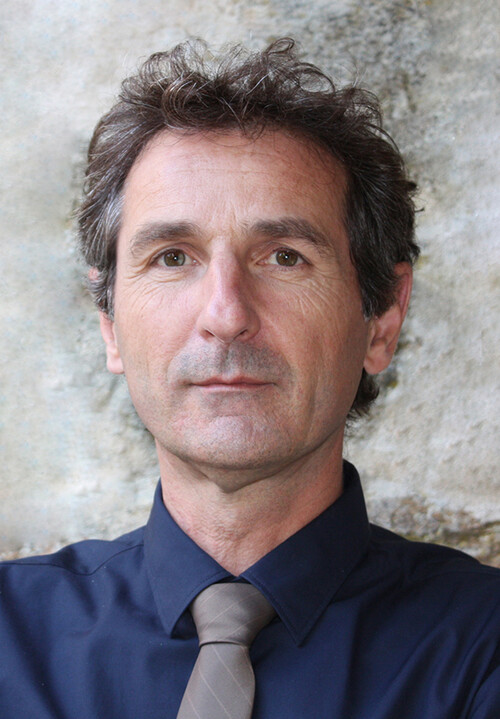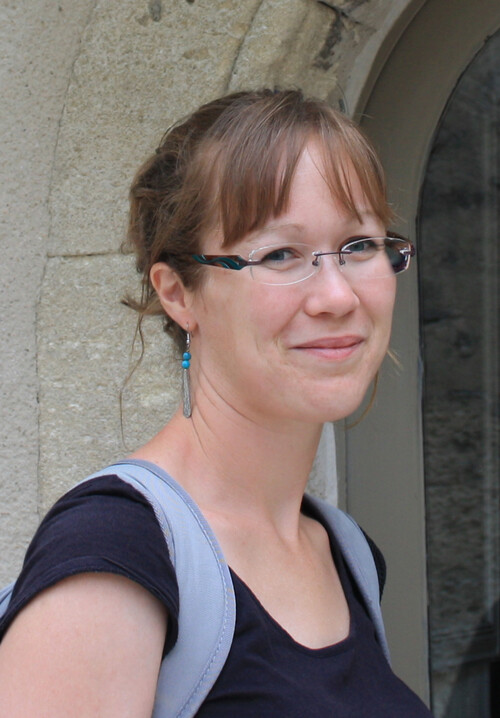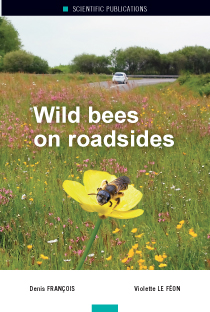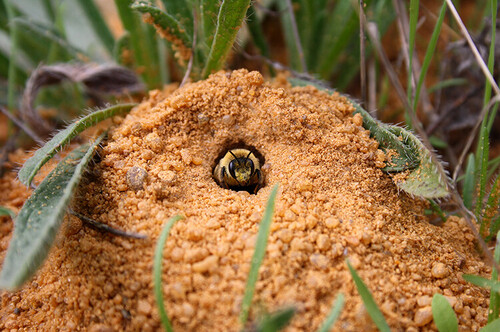Wild bees on roadsides
It is an accepted fact: wild bee populations are in decline! This affects wild flora and food chains in our ecosystems, leading to cascading effects on many other species. How can we make road verges more wild bee-friendly?
Denis FRANÇOIS et Violette LE FÉON
The book in a few words
The ecological potential of roadsides
There are many causes for the decline in wild bee populations: general land denaturing, intensive farming, climate change, etc. The construction of transport infrastructure plays a role by destroying natural habitats and causing the fragmentation of ecosystems. Today France is criss-crossed by more than a million kilometres of roads. For the national highway network, it is estimated that the green spaces included within the road rights-of-way (called “road green verges”) cover a total area of 5,000km².
These areas have the advantage of receiving few human visitors (just a few highway workers), and the use of pesticides (weed-killers and insecticides) was banned several years ago. Moreover, in some areas, the so-called “late mowing” has favoured the reappearance of a large number of flowers belonging to various local species, similar to what is found in traditional mowed meadows, which are also becoming increasingly rare in France. Yet, these provide particularly favourable environments for many pollinating insects, in particular bees and butterflies.
Roadsides can thus play a decisive role in the conservation of pollinating insects in zones that are affected by human activities.
The diversity of wild bees
Mainland France hosts almost 1,000 species of wild bees. Most of them are solitary and inconspicuous, therefore much less known to the general public than the one honey bee species which is raised by beekeepers to provide us with hive products. These numerous wild species come in a wide range of colours, shapes and sizes (from a few millimetres to 3cm in length).They house, feed themselves and contribute to pollination without any need for humans, thanks to the resources in their environment. Bumblebees are without doubt the wild bees which are best known to the general public.
The diversity of wild bees, through their form and flower visiting behaviour, enhances the overall pollen flow between plants of the same species (cultivated or wild) which increases the efficiency of their reproduction. For cultivated species this improves production, both in terms of quality and quantity.
A book to bolster inititatives in the field
In areas which are affected by human activities, road green verge provides easily exploitable potential for the conservation of wild bees, the restoration of ecological continuity (green networks) and insect pollination.
The book Wild bees on roadsides provides information, encouragement and assistance to road managers regarding their actions to safeguard and conserve wild bees in their area of operation.
To know more about the book


Denis FRANÇOIS is a senior researcher inf sustainable development in University Gustave Eiffel’s Planning, Mobility and Environment Department (AME) in Nantes. Building on his initial training in environmental science and technology (Universities of Angers, Montpellier, Paris XII, École Nationale du Génie Rural et des Forêts, École Nationale des Ponts et Chaussées), his work focuses on the management of natural resources and the environment in the context of spatial planning. His research is concerned with identifying and evaluating the effects of linear transport infrastructure (LTI) on biotic and abiotic targets. The aim of his work is to improve how the design and management of LTIs is integrated with the areas they pass through, in order to reduce their environmental impact. As such, he is particularly interested in the ecological functions that are made possible thanks to their vegetated verges.
Violette LE FÉON holds a doctorate in biology, and is a specialist in the ecology of wild bees and pollination. She completed her doctoral thesis at the University of Rennes then worked successively at Buenos Aires University of Agronomy and at the Bee and Environment Unit of the Institut National de Recherche pour l’Agriculture, l’Alimentation et l’Environnment (INRAE, UR 406 in Avignon). Her research focuses on the impacts of human activities on wild bee communities. She began by studying agricultural land-scapes, analysing the effects of agricultural practices and the landscape context in France and Argentina (large-scale agriculture in the pampas). She then studied bees in urban areas and in the rights-of-way of linear transportation infrastructure. In these different contexts which are experiencing anthropogenic pressures, her work aims to find a balance between anthropogenic use and the conservation of wild bees with the pollination service which they provide.
During the last twenty years, the decline of pollinating insects and its consequences on the reproduction of wild and cultivated plants have raised concerns and questions not only among the scientific community but also within public authorities.
Wild bees play a significant role in the pollination of many crops and wild plants. Like many insects, they are victims of various pressures related to more intensive agricultural practices and the development of transport networks. The consequences on wild bee populations in Europe are such that today a number of species are threatened with extinction.
Roads are partly responsible for the pressures that affect wild bee populations, but in areas that have experienced environmental damage, road verges can help to overcome some of the problems. Indeed in some places road verges are the last sites that harbour the natural flora and its associated insects. They cover thousands of hectares on the national scale and are therefore linked to a wide variety of natural environments that make up the green network.
- Preface by Anne LARIGAUDERIE
- Introduction
- Part I. Wild bees today: status and issues
- Pollination, pollinators and wild insect pollinators
- The ecology of wild bees
- Part II. Fundamentals of action to support wild bees in road verges
- Why try to meet the needs of wild bees in road verges
- How to meet the needs of bees in road verges
- Part III. Operational recommendations for the management of road verges
- Food resources
- Nesting sites
- Implementation of actions
- Postface
FRANÇOIS D., LE FÉON V., Wild bees on roadsides Why we should make road verges more wild bee-friendly, and how we can. Marne-la-Vallée : Université Gustave Eiffel, 2020. Scientific publications, OSI2-A, 118 pages, ISBN 978-2-85782-755-9
- English version, pdf file (ISBN 978-2-85782-755-9), free download licenced under CC BY-NC-ND 4.0.
- French version, pdf file (ISBN 978-2-85782-733-7), free download licenced under CC BY-NC-ND 4.0.
Identity card of the book
| Title: | Wild bees on roadsides |
| Authors: | Denis FRANÇOIS and Violette LE FÉON |
| Publisher: | Gustave Eiffel University |
| Collection: | The IFSTTAR's collections |
| Reference: | OSI2-A |
| ISBN: | 978-2-85782-755-9 |
| Edition: | Pdf file, free download |
| License: | CC BY-NC-ND 4.0 |
| Publication date: | Published in october 2020 |
| Number of pages: | 118 pages |
| Language: | English (a French version is available) |
| Key words: | wild bees, local flora, nesting, road verges, management,conservation |
| Contact: | librairie(at)univ-eiffel.fr |



![[Translate to English:] Licence creative commons BY-SA 4.0 [Translate to English:] Licence creative commons BY-SA 4.0](https://reflexscience.univ-gustave-eiffel.fr/fileadmin/ReflexScience/Accueil/Logos/CCbySA.png)